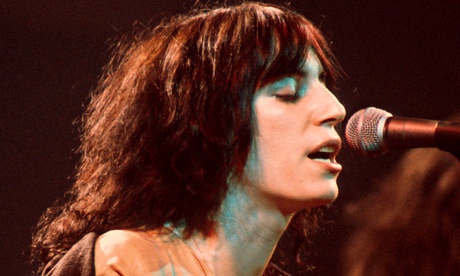
When John Lennon moved to New York in 1971 he described his adopted home as "the capital of the world". Much of the city shared his opinion. For Wall Street traders, UN wonks, ad-land Mad Men, Italian crime lords, Moma curators, Stonewall protesters, Bleecker Street folkies and Nuyorican salsa stars, the Big Apple was, for all its faults, the 20th century's Rome.
In reality, Gotham was going bust, its shadows darkening. As the 1970s unfolded the city sank into a swamp of crime, its streets flooded with drugs, its mounting debts needing a 1975 bailout that President Gerald Ford at first flatly refused – letting the liberal city go bust would serve as a lesson."The rest of the country hated us," says Will Hermes, a Rolling Stone writer who grew up in Queens, and whose book, subtitled "Five years in New York that changed music forever", is a dazzling, kaleidoscopic homage to his home town from 1973 to 1977.
That subtitle is no hyperbole. Although rock is Hermes's principal focus, with the ascent of Patti Smith and Bruce Springsteen as his lodestones, he writes with equal alacrity about NYC's other game-changing scenes: the birth of hip-hop at the DJ showdowns of Kool Herc and Grandmaster Flash; the "loft jazz" movement instigated by David Murray and Anthony Braxton, the new strains of salsa cooked up by bandleader Willie Colón and Rubén Blades ("A singer interested in being more than El Rey de Nueva York"), and the cerebral, minimalist operas of Philip Glass and Laurie Anderson. These were "young iconoclasts on the edge of the mainstream".
The upside of Gotham's decay was the availability of cheap property, especially on the Lower East Side, where musicians and artists could find living and performance space amid the decay and squalor. It made for a small town. The Talking Heads' Tina Weymouth and Chris Frantz, for example, lived downstairs from jazz avant-gardist Don Cherry. On the nascent rock scene that revolved around the nightclub CBGB, everyone knew (and distrusted) everyone else, with acts falling into two distinct camps – the somewhat po-faced art-rock of Patti Smith, Richard Hell and Tom Verlaine, and the gutsier pop-rock of Blondie and the Ramones, all names that would spearhead New York punk in 1975 and 1976. Notable outbreaks of bad blood included a CBGB brawl between transvestite rocker Wayne County and "Handsome" Dick Manitoba of The Dictators that left the latter in hospital and the former in jail.
Hermes's method is strictly chronological, flitting from one music scene to the next while backgrounding seminal concerts and records with the city's political and social convulsions; the collapse of its transport system, the influx of cheap Asian heroin in 1973, the "Great Dope Famine" of 1976, and the paranoia unleashed by the murder spree of "Son of Sam" in 1977. His almanac requires Hermes to keep a lot of plates spinning, but its cornucopia of data builds a keen sense of a city brimming with music; the week before Springsteen debuted Born to Run at the Bottom Line you could have caught jazz magician Sun Ra at the venue.
Rock writing and music overlapped; the likes of Patti Smith and David Byrne would write in the New York Rocker, while scribes like Lester Bangs flirted with the stage. Rolling Stone's Jon Landau became Springsteen's manager. Hermes's own music commentary is informed and amusing; he describes Talking Heads (one of whose songs provide his title) as "the sound of a panic attack massaged into a way of life".
The book's 20-page epilogue wraps up the destinies of its protagonists. "Hip-hop grew up to rule the world," submits Hermes, going onto consider the fate of NYC itself. "The concentrated vitality of the 70s music scene diminished in the 1980s and 1990s as the city revived economically… the downtown artist ghetto became a high-end playground." The store where the Ramones played their first gig, he notes, is now a pet boutique.

